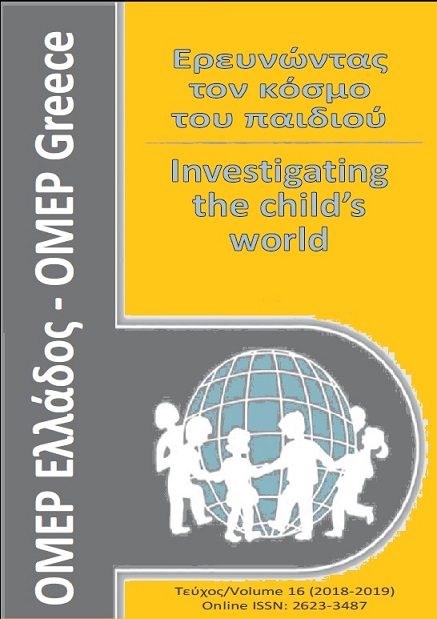Adaptation, Psychometric evaluation and Standardization of the Teacher Rating of Oral Language and Literacy skills for preschool children

Abstract
This paper describes the psychometric evaluation of the rating scale "Teacher Rating of Oral Language and Literacy-TROLL (Teacher Rating of Oral Language and Literacy) (Dickinson, 1997) in the Greek population. The scale was filled by 60 preschool teachers for 1110 preschool aged children between 3 and 6 years old residing different areas of the country. At the same time, the rating scale was tested for the reliability, concurrent validity and its internal structure in the Greek population. The reliability was tested with the method of test-retest and internal consistency, while the concurrent validity was measured with the simultaneous individual administration of a battery of tools assessing the same language skills. High reliability scores were obtained, both by the test-retest method and the internal consistency method. At the same time, the concurrent validity of the scale was confirmed by the high correlations found between children's performance on the rating scale and on the battery of psychometric tools. Finally, the standardization data can be used by educators to assess in a first level the language abilities of a child in comparison to the distribution of the general population.
Article Details
- How to Cite
-
Ράλλη (Asimina Ralli) Α., Ρούσσος (Petros Roussos) Π., Καζάλη (Elena Kazali) Ε., & Κωνσταντοπούλου (Panagiota Konstantopoulou) Π. (2020). Adaptation, Psychometric evaluation and Standardization of the Teacher Rating of Oral Language and Literacy skills for preschool children. Investigating the child’s World, 16, 18–41. https://doi.org/10.12681/icw.18591
- Issue
- Vol. 16 (2019)
- Section
- Scientific articles & educational projects

This work is licensed under a Creative Commons Attribution-NonCommercial 4.0 International License.
Authors who publish with this journal agree to the following terms:
· Authors retain copyright and grant the journal right of first publication with the work simultaneously licensed under a Creative Commons Attribution Non-Commercial License that allows others to share the work with an acknowledgement of the work's authorship and initial publication in this journal.
· Authors are able to enter into separate, additional contractual arrangements for the non-exclusive distribution of the journal's published version of the work (e.g. post it to an institutional repository or publish it in a book), with an acknowledgement of its initial publication in this journal.
· Authors are permitted and encouraged to post their work online (preferably in institutional repositories or on their website) prior to and during the submission process, as it can lead to productive exchanges, as well as earlier and greater citation of published work.



